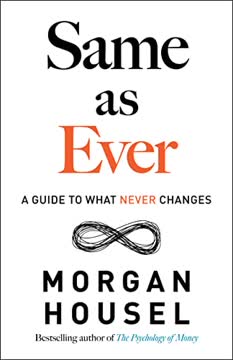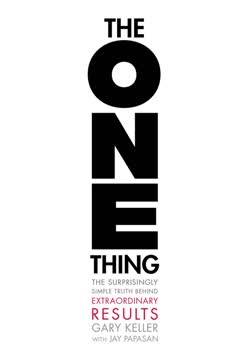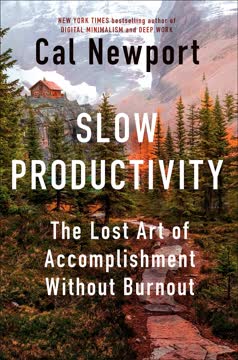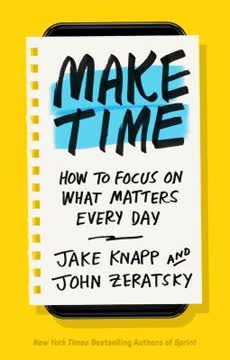Key Takeaways
1. Manage your attention deliberately to boost productivity and creativity
Your attention is the most powerful tool you have to live a good, productive life.
Attention is finite. Our brains can only process about 40 bits of information out of the 11 million bits we receive each second. This limited attentional space is crucial for both productivity and creativity. By managing our attention deliberately, we can focus more deeply on important tasks (hyperfocus) and allow our minds to wander productively (scatterfocus).
Intentional attention management leads to:
- Increased productivity
- Enhanced creativity
- Clearer thinking
- Greater engagement with work and life
- More meaningful experiences
- Reduced stress and overwhelm
To improve attention management:
- Set clear intentions for tasks
- Eliminate distractions proactively
- Practice meta-awareness (noticing where your attention is)
- Alternate between periods of deep focus and intentional mind-wandering
2. Hyperfocus: Concentrate on one important task at a time
When you hyperfocus on a task, you expand one task, project, or other object of attention . . . so it fills your attentional space completely.
Hyperfocus boosts productivity. By focusing intensely on one important task, you can accomplish more in less time. This state of deep concentration allows you to work more efficiently and effectively, especially on complex or creative tasks.
To enter hyperfocus:
- Choose one important task
- Eliminate distractions
- Focus completely on the chosen task
- Continuously bring your attention back when it wanders
Benefits of hyperfocus include:
- Increased work quality
- Faster task completion
- Deeper learning and understanding
- Enhanced problem-solving abilities
- Greater sense of accomplishment
3. Tame distractions to enhance focus and productivity
Distractions are infinitely easier to deal with before they become a temptation.
Proactive distraction management. Our brains are wired to seek novelty, making distractions particularly tempting. By eliminating potential distractions before they occur, we can maintain focus more easily and for longer periods.
Strategies to tame distractions:
- Create a distraction-free mode (e.g., blocking websites, silencing notifications)
- Keep your phone out of sight or in another room
- Use noise-canceling headphones
- Set specific times for checking email and social media
- Simplify your physical and digital environments
Remember: Every time you resist a distraction, you're training your brain to focus better in the future.
4. Scatterfocus: Let your mind wander intentionally for creativity
Scatterfocus is the most creative mode of your brain.
Intentional mind-wandering. While hyperfocus is crucial for productivity, scatterfocus is essential for creativity, problem-solving, and future planning. By allowing your mind to wander deliberately, you create space for new connections and insights to emerge.
Three types of scatterfocus:
- Capture mode: Let thoughts flow freely and write them down
- Problem-crunching mode: Hold a problem loosely in mind while letting thoughts wander
- Habitual mode: Engage in a simple task while allowing your mind to roam
Benefits of scatterfocus:
- Enhanced creativity and problem-solving
- Better future planning
- Increased self-awareness
- Improved emotional processing
- Recharging of mental energy
5. Set strong intentions to work on what matters most
Intention should always precede attention—in fact, the two ideas pair perfectly.
Deliberate task selection. By setting clear intentions for what you want to accomplish, you're more likely to focus on important tasks rather than getting caught up in busywork or distractions.
Techniques for setting strong intentions:
- Use the Rule of 3: Choose three main tasks to accomplish each day
- Identify your most consequential tasks
- Create implementation intentions (specific when-then plans)
- Schedule important tasks during your peak energy times
Benefits of strong intentions:
- Increased productivity on meaningful work
- Reduced procrastination
- Greater sense of purpose and accomplishment
- Better alignment between daily actions and long-term goals
6. Expand your attentional space through mindfulness and meditation
Meditation is simple—sit somewhere with your eyes closed and pay attention to your breath.
Mental capacity building. Regular mindfulness and meditation practices can increase your working memory capacity, allowing you to hold and process more information simultaneously. This expanded attentional space enhances both focus and creativity.
Benefits of expanded attentional space:
- Improved ability to focus on complex tasks
- Enhanced creativity and problem-solving
- Reduced mind-wandering during focused work
- Increased meta-awareness (noticing your thoughts)
- Better emotional regulation
Start with just a few minutes of daily meditation, focusing on your breath. As you practice, you'll find it easier to maintain focus and notice when your mind wanders.
7. Recharge your attention with strategic breaks
The more often we scatterfocus to replenish our mental energy, the more energy we have for our most important tasks.
Deliberate rest. Taking regular breaks is crucial for maintaining high levels of focus and productivity throughout the day. Strategic breaks allow your mind to recharge and can even spark creativity.
Guidelines for effective breaks:
- Take a break at least every 90 minutes
- Aim for about 15 minutes of break time per hour of work
- Choose activities that are low-effort and enjoyable
- Disconnect from work-related thoughts during breaks
Effective break activities:
- Going for a walk, especially in nature
- Listening to music
- Meditating
- Engaging in a creative hobby
- Having a meaningful conversation
Remember: The busier you are, the more important it is to take regular breaks.
8. Collect and connect valuable "dots" of information
We are what we consume.
Intentional information consumption. The quality of information you take in directly affects your ability to make creative connections and solve problems. By deliberately seeking out valuable "dots" of information, you enhance your mental library for future use.
Types of information to consume:
- Useful: Actionable, relevant to your goals, long-lasting value
- Balanced: Both useful and entertaining (e.g., well-written non-fiction)
- Entertaining: Fun but less practical (use sparingly)
Strategies for collecting valuable dots:
- Read widely, especially outside your field of expertise
- Engage in meaningful conversations
- Take courses or attend workshops
- Expose yourself to diverse experiences and perspectives
Remember: Your creativity is limited by the information you've collected. Expand your mental library to enhance your creative potential.
9. Work around your energy levels for optimal performance
You're the most productive when you dedicate your energy-rich moments to your most complex, meaningful tasks.
Energy-aligned productivity. Our energy levels fluctuate throughout the day, affecting our ability to focus and be creative. By aligning your tasks with your natural energy rhythms, you can optimize both productivity and creativity.
Strategies for energy-aligned work:
- Identify your Biological Prime Time (BPT) for focused work
- Schedule complex, high-priority tasks during your BPT
- Use lower-energy periods for creative tasks (Creative Prime Time)
- Take breaks when you notice your energy dipping
Remember: Working with your natural energy rhythms allows you to accomplish more with less effort and stress.
10. Invest in happiness to enhance focus and creativity
Happiness is the rose-colored lens we place atop our attentional space, which allows us to relate to our experiences in a more productive and creative fashion.
Positive productivity. A positive mood expands your attentional space, making it easier to focus deeply and think creatively. By intentionally cultivating happiness, you can enhance both your productivity and your overall well-being.
Science-backed strategies to boost happiness:
- Practice gratitude (e.g., list three things you're grateful for daily)
- Engage in regular physical exercise
- Invest time in meaningful relationships
- Meditate or practice mindfulness
- Perform random acts of kindness
Benefits of happiness for productivity and creativity:
- Expanded attentional space
- Increased ability to overcome challenges
- Enhanced problem-solving skills
- Improved memory recall
- Greater resilience in the face of setbacks
Remember: Investing in your happiness is not just good for your well-being—it's also a powerful productivity tool.
Last updated:
FAQ
What's Hyperfocus: How to Manage Your Attention in a World of Distraction about?
- Focus on Attention Management: The book by Chris Bailey explores managing attention amidst distractions, emphasizing that productivity is more about attention management than time management.
- Two Modes of Focus: It introduces hyperfocus for intense concentration and scatterfocus for creative thinking, both essential for productivity and creativity.
- Practical Strategies: Bailey offers actionable strategies to cultivate hyperfocus and minimize distractions, aiding in accomplishing meaningful work.
Why should I read Hyperfocus by Chris Bailey?
- Combat Distraction: The book provides practical solutions to regain control over your attention, crucial in today's distraction-filled world.
- Research-Based Insights: Grounded in scientific research, it combines theory with practical advice, making it a credible resource for improving focus.
- Enhance Productivity: Effective attention management can significantly boost productivity and satisfaction in both work and personal life.
What are the key takeaways of Hyperfocus?
- Attention is Limited: Our attention is finite, capable of focusing on about 40 bits of information at once, highlighting the need for effective focus management.
- Intentional Focus: Setting clear intentions, like using the Rule of 3, helps prioritize tasks and direct attention to what truly matters.
- Tame Distractions: Strategies for a distraction-free environment, such as using apps and managing notifications, are crucial for maintaining focus.
What is hyperfocus, according to Hyperfocus?
- Deep Concentration: Hyperfocus is intense concentration on a single task, filling your attentional space and enhancing productivity and creativity.
- Deliberate Attention Management: Achieving hyperfocus involves choosing important tasks, eliminating distractions, and maintaining focus for a fulfilling work experience.
- Benefits of Hyperfocus: It allows accomplishing more in less time, increases work satisfaction, and reduces stress compared to multitasking.
How can I practice hyperfocus as suggested in Hyperfocus?
- Set Clear Intentions: Choose a specific, meaningful task to focus on, setting the stage for hyperfocus and effective attention direction.
- Eliminate Distractions: Create a distraction-free environment by turning off notifications and using distraction-blocking apps to minimize interruptions.
- Use Timers: Work on tasks for predetermined periods without interruption, creating urgency and encouraging sustained focus.
What is scatterfocus, and how does it relate to hyperfocus in Hyperfocus?
- Creative Thinking Mode: Scatterfocus involves letting your mind wander, essential for creativity and problem-solving.
- Balance Between Modes: Both hyperfocus and scatterfocus are necessary for optimal productivity, with hyperfocus for deep work and scatterfocus for innovation.
- Encouraging Mind Wandering: Engaging in scatterfocus can lead to breakthroughs, allowing the brain to process information less structuredly.
How can I incorporate scatterfocus into my routine as per Hyperfocus?
- Engage in Habitual Tasks: Perform simple tasks like walking or cleaning, allowing your mind to wander and create mental space for scatterfocus.
- Schedule Mind-Wandering Time: Set aside time for mind-wandering, letting thoughts flow without specific goals to foster creativity.
- Capture Ideas: Keep a notepad handy to jot down insights during scatterfocus sessions, retaining valuable thoughts that emerge.
What are some practical strategies from Hyperfocus to minimize distractions?
- Distraction Lists: Jot down thoughts or tasks that arise while focusing, acknowledging distractions without derailing attention.
- Mind Your Environment: Modify your workspace to reduce distractions, like keeping your phone away or using noise-canceling headphones.
- Set Boundaries: Establish specific times for checking emails and messages, maintaining focus on primary tasks.
What are the four types of tasks discussed in Hyperfocus?
- Necessary Work: Productive but unattractive tasks like meetings, requiring effort to engage with.
- Purposeful Work: Productive and attractive tasks like writing or mentoring, providing satisfaction and impact.
- Unnecessary Work: Neither productive nor attractive tasks, often serving as procrastination.
- Distracting Work: Attractive but unproductive tasks like social media, consuming time without meaningful results.
What are some effective methods to improve my attention as suggested in Hyperfocus?
- Meditation: Enhances working memory and attention span, training the brain to focus on a single object.
- Mindfulness: Increases awareness of thoughts and surroundings, reducing mind-wandering and improving task focus.
- Regular Reflection: Assess what occupies your attentional space, adjusting focus to maintain clarity and intention.
What are the best quotes from Hyperfocus and what do they mean?
- "Attention is your most valuable asset.": Emphasizes managing attention effectively, impacting productivity and life quality.
- "We are what we pay attention to.": Highlights that experiences and outcomes are shaped by focus, leading to a fulfilling life.
- "Your focus determines your reality.": Suggests that directing attention shapes perceptions and experiences, creating a satisfying reality.
How does Hyperfocus suggest managing distractions?
- Identify Common Distractions: Recognize and minimize common distractions, using apps or setting specific times for emails.
- Create a Focus Ritual: Establish routines or environments signaling the brain to concentrate, preparing for deep work.
- Practice Mindfulness: Increases awareness of distractions, allowing effective redirection of attention back to tasks.
Review Summary
Readers generally praise Hyperfocus for its practical advice on managing attention and increasing productivity. Many find the concepts of hyperfocus and scatterfocus enlightening, appreciating the balance between concentrated work and creative mind-wandering. While some critics feel the book repeats common productivity advice, most readers find value in Bailey's science-based approach and easy-to-implement strategies. The audiobook narration by the author is also well-received.
Similar Books










Download PDF
Download EPUB
.epub digital book format is ideal for reading ebooks on phones, tablets, and e-readers.






